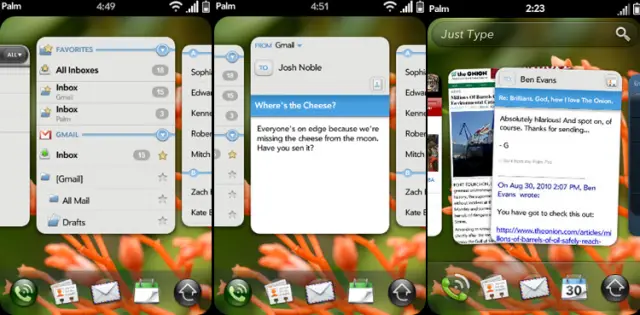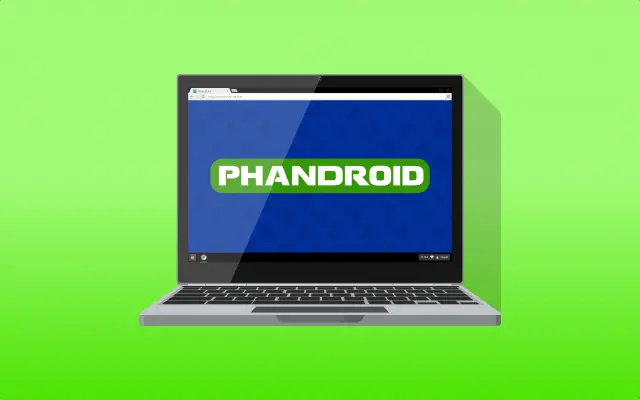Android has been around for a little over a decade and a lot has changed since the its early days. What started as a simple operating system has become a powerhouse spanning across countless devices and form factors. The history of Android is an interesting story. You might think you know everything there is to know about Android, but we’ve got 10 things you probably didn’t know about. Check it out!
1. Google didn’t create Android
Nowadays Google and Android are synonymous with each other, but you may be surprised to find out that was not always the case. Android was founded in 2003 by Andy Rubin, Rich Miner, Nick Sears, and Chris White. The founders had strong ties to T-Mobile. Andy Rubin created the ultra-popular T-Mobile Sidekick, and Nick Sears was vice president at T-Mobile. So, you can see why T-Mobile landed the first Android phone.
It wasn’t until 2005 that Google acquired Android Inc. Rubin, Miner, and White all stayed with Android through the acquisition. Together, they developed what we now know as the Android OS, in fact, Rubin’s nickname is where the name “Android” came from. Many people consider Android to be one of Google’s best acquisitions and 10 years after the acquisition, Android has ballooned to control 88% of the smartphone OS market share.
2. Many critics thought Android would fail miserably

Android is nearly universally praised nowadays, but back in the day critics were much more skeptical. At the time of Android’s emergence, the iPhone was still relatively fresh while Microsoft and Blackberry were busy leading the way in smartphones. The idea of a web search and email company making phones didn’t seem like a slam dunk.
In late 2008 during a round-table discussion about mobile the question was asked “we have to talk about Android, right?” A member from Pandora adamantly responded “Why? Why do we have to talk about Android – nobody cares.” Obviously Pandora eventually wised up and created an Android app.
Check out this comment from a Wired article that called the G1 one of 2008’s worst cell phones.
“The G1’s unveiling was a lot like the Bigfoot press conference — a long, awkward presentation that left a lot of people confused and/or disappointed. The handset poised to out-iPhone the iPhone had a laundry list of hardware letdowns: bulky, unattractive, and saddled with yet another proprietary headphone jack.”
It certainly wasn’t the prettiest smartphone of its time, but what the G1 lacked in looks it made up for in functionality. Some would say that’s even better.
3. The first Android prototype looked like a Blackberry

Many people believe that if it wasn’t for the iPhone, the first Android device would have looked drastically different than the T-Mobile G1 (HTC Dream). In 2007, before Apple showed off the original iPhone, the first Android prototype was already floating around. The device — codenamed “Sooner” — had a portrait keyboard, call and end buttons, track pad, and no touchscreen at all. The Android UI even closely resembled the Blackberry interface.
Of course, all that changed once the iPhone was announced. It was so different. There was no physical keyboard, only a big display for its time and a revolutionary touchscreen interface. The next Android device we’d see after that — the T-Mobile G1 — would also have a big display with a touchscreen interface.
The BlackBerry-esque prototype? It never came to market. We can’t say for certain that the iPhone had any effect on Google’s vision for Android, but it wouldn’t be out of the question.
4. Android 1.0 and 1.1 weren’t named after desserts

For a long time Google has been nicknaming new versions of Android with desserts. At the time of this article we are at Android 5.0 “Lollipop,’ and before that it was KitKat, Jelly Bean, Ice Cream Sandwich, and so on. Android fans are always trying to predict what the next name will be. Google even got in on the fun with this teaser video for Android 5.0.
What you may not know is the first couple versions of Android actually weren’t named after desserts. At least not intentionally. Android 1.0 was sometimes called “Alpha” or “Astro Boy” while Android 1.1 technically had a dessert name, but not in the order that we know today. It was known internally as “Petit Four,” which is a small French appetizer. Android 1.5 “Cupcake” was the first version to have an official dessert nickname and so began the naming scheme we see today.
The “A” and “B” dessert names for Android 1.0 and 1.1 will never be known but if we had to guess which names they would have used, perhaps “Apple Pie” and “Banana Split” are pretty obvious. What would you guess?
5. Android 3.0 is the only version to never run on phones

Today Android is built to run on many different types of hardware configurations in all shapes and sizes. Everything from phones, tablets, watches, cars, TVs — you name it. But that hasn’t always been the case. In 2010, Apple announced the original iPad and the tech world instantly had tablet fever. Android manufacturers wanted to cash in on the tablet frenzy but at the time, the OS was only suited for smaller screened devices like smartphones.
It didn’t stop some manufacturers from giving it a shot. Samsung had some luck using Android 2.3 Gingerbread on the mid-sized Galaxy Tab 7.0, but if Android was going to compete with the 10-inch iPad it needed a major overhaul and at CES 2011, the world got its first look at Android 3.0 Honeycomb running on the Motorola XOOM.
Honeycomb featured a completely redesigned user interface, one made especially for tablets. With a dark “Holo UI,” and larger interactive widgets, the Android version was still considered a failure in some respects. While every manufacturer on the face of the Earth was making Android tablets, they were expensive and lacked proper tablet-dedicated apps. Google would eventually scrap Honeycomb and built future versions of Android — starting with Ice Cream Sandwich — to work on all screen sizes. One of the lasting features of Honeycomb is the on-screen nav buttons we still use to this day.
6. First Android phone didn’t even have a virtual keyboard or 3.5mm headset jack

If you would go back to 2008 and tell the world that nearly all smartphones in the future wouldn’t have physical keyboards — you would be laughed at. During this time the most popular phone was a BlackBerry, which of course had an iconic physical keyboard. The idea of a device without physical keys didn’t become popular until the original iPhone, but even then there were many skeptics.
In fact, the first Android device — the T-Mobile G1 — came equipped with a slide-out physical keyboard, but you might be more surprised to learn what it didn’t have. The G1 shipped with Android 1.1 which, at the time, didn’t feature a virtual keyboard for typing on the screen. You absolutely had to use the physical keyboard to type, which meant you couldn’t do any one-handed typing in portrait mode. It wasn’t until six months later with the release of Android 1.5 that the G1 finally added a virtual keyboard.
The other feature lacking from the T-Mobile G1 was a big one that couldn’t be fixed with a simple software update: the headphone jack. HTC inexplicably did not include a traditional 3.5mm headphone jack in the G1. Instead, the phone came with a proprietary adapter you had to use meaning you wouldn’t listen to music and charge the phone at the same time. This was a common complaint in the initial reviews for the T-Mobile G1 and strangely a foreshadowing of things to come.
7. Android got Google’s CEO kicked off Apple’s board

Over time as competition between iOS and Android has picked up, the relationship between Apple and Google wasn’t so friendly. This was most evident in 2009 when Google CEO Eric Schmidt was forced to resign from Apple’s board of directors. Steve Jobs had this to say:
“Unfortunately, as Google enters more of Apple’s core businesses, with Android and now Chrome OS, Eric’s effectiveness as an Apple board member will be significantly diminished, since he will have to recuse himself from even larger portions of our meetings due to potential conflicts of interest.”
You can imagine there were a lot of sensational headlines about this story, but it makes a lot of sense. What good is a board member that can’t be present at meetings due to a conflict of interest? The relationship between Google and Apple continued to heat up as years went on, with Apple making the controversial decision to remove Google Maps in iOS 6, resulting in Google later blocking Apple’s own 3rd party YouTube app.
Eventually an agreement would be met where Google would be allowed to offer their apps in the App Store, even becoming the default search engine in iOS for the hefty sum of $3-4 billion a year.
8. WebOS could have destroyed Android

As we’ve already covered, people were a bit skeptical of Android at the very beginning. WebOS on the other hand was universally praised when it was announced. At that time there were very few Android devices available and by the time WebOS launched, Android 1.5 was still fresh and no one had even heard of the Motorola DROID.
The timing was perfect for WebOS to stomp out Android and become the true contender to iOS, at least that’s what critics believed. It might have actually happened too if it wasn’t for a few strange decisions by Palm. They launched the first WebOS device on Sprint instead of one of the big carriers and the marketing campaign was very strange to say the least. Still, the Palm Pre sold very well the first month, but suffered from a steep drop off after that.
A couple of months later Verizon would announce the Motorola DROID and Apple was onto to the iPhone 3GS. Palm and WebOS fizzled out, Google continued to improve Android, and now it quickly dominated the world with its open platform. Google would later hire the designer of WebOS, Matias Duarte, to help improve Android’s interface and design. His first big contribution? Android 3.0 Honeycomb’s Holo UI.
9. Sony made the first Android smartwatch in 2010

In 2014, Google announced Android Wear, a special version of Android built especially for smartwatches. Since then we’ve seen a bunch of Android smartwatches flood the market. You might think that these are the first Android-based smartwatches to have been made, but one company beat everyone to the punch.
Way back in 2010 Sony (Ericsson) launched the LiveView watch. It connected with Android phones to display Twitter timelines, RSS feeds, SMS, and control the phone’s media player. Sony would later launch the SmartWatch 2 in 2013 with many of the same features. It wasn’t until around this time that Samsung launched their first Android-based smartwatch but Sony was first out the gate.
10. Phandroid is the first Android-focused website in the world

On November 5th 2007 Google officially announced Android. On that very same day the first post on Phandroid.com was published. Wired.com even wrote a short article about Phandroid, saying “Android already has Phandroids” and we’ve been reporting on Android ever since.
Here’s a quick look at what Phandroid looked like back then. The site has changed a lot over the years, but one thing hasn’t: our dedication to all things Android. No one has been doing this longer than us and we plan on keeping it that way for many years to come. Whether you’ve been here since the beginning or just started reading we hope you stick around to see everything Android has to offer.



